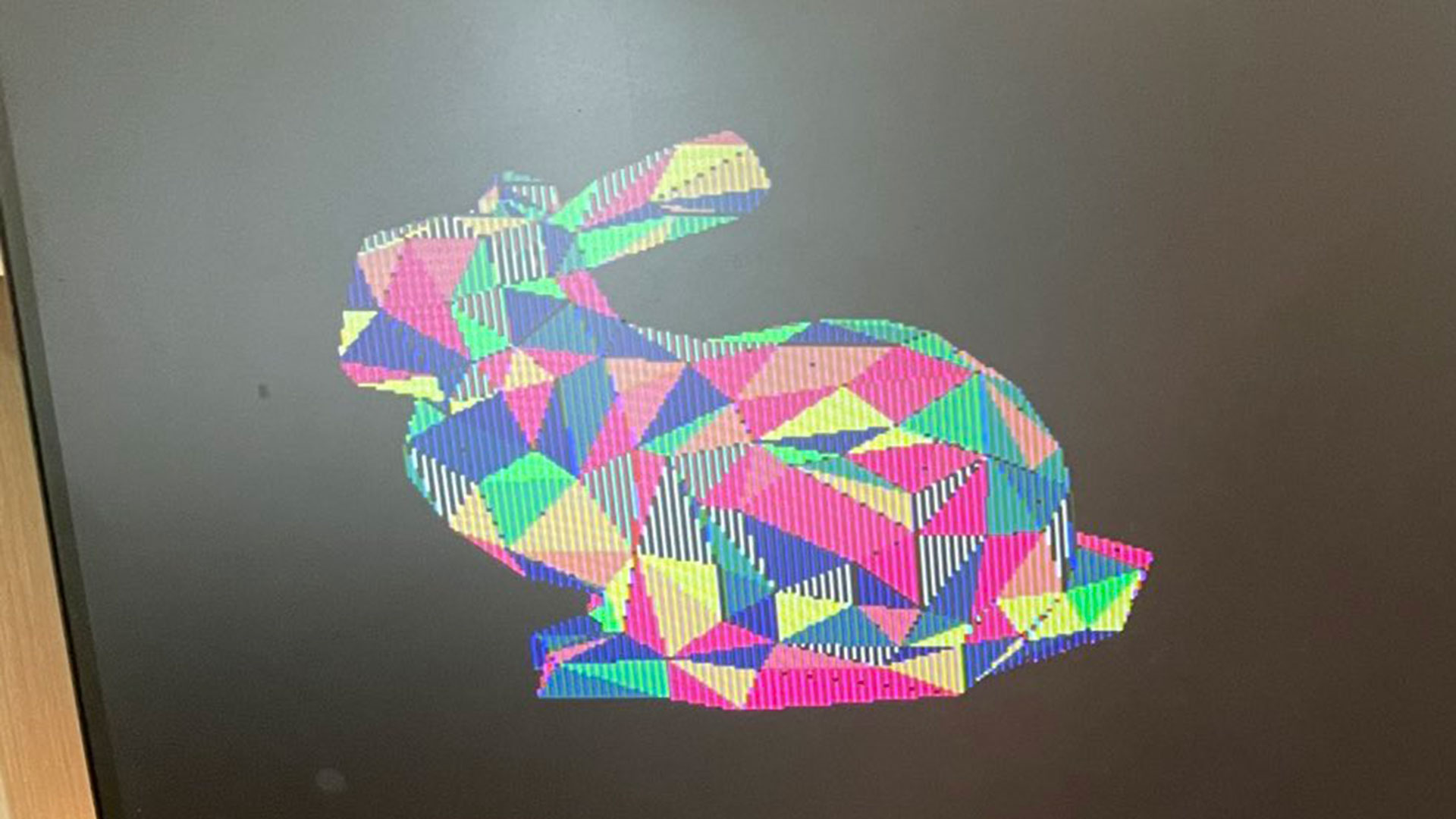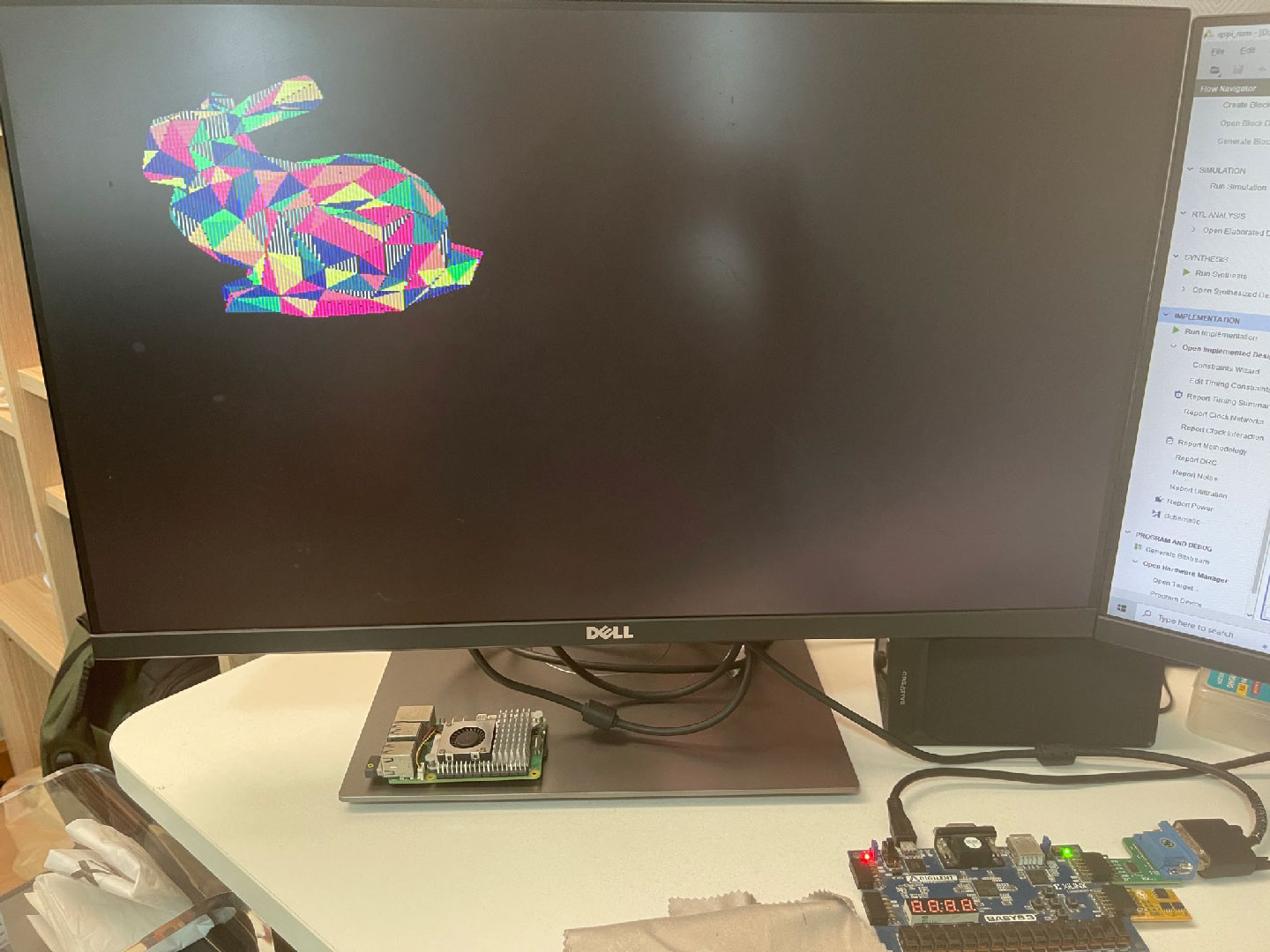The world's ‘tiniest GPU’ heads to production — 200,000-transistor TinyGPU v2.0 can render gamepad-manipulated 3D images with up to 1K triangles in real-time
This standalone 25 MHz GPU outputs at 320 x 240 pixels with 4-bit color, performing 3D rasterization, transformations, and lighting.

The ‘tiniest GPU’ has gotten a big update. Amateur FPGA designer and retro PC enthusiast Pongsagon Vichit has just gone public with the TinyGPU v2.0. This GPU is described as a standalone processor that is capable of rasterization, plus transformation & lighting (hello GeForce 256). 0Vichit, AKA @MattDIYgraphics on X, also says that this GPU has been submitted to the upcoming Tiny Tapeout shuttle, where it will be hewn from ~200,000 transistors across the max permissible 4x4 tile project size. In contrast, the market-leading Nvidia RTX 5090 has 92.2 billion transistors, but naturally, it comes with exponential amounts of performance as a result of its heftier transistor budget.
TinyGPU v2.0. A standalone GPU that can display a model file from Flash.Render 1K tri at 6.5fps in 320x240, 4-bit color. Tested on Basys3 FPGA. Submitted to the upcoming #TinyTapeout shuttle. more spec 🧵.git: https://t.co/ClhiKS89st pic.twitter.com/FrV0VXxf6CNovember 3, 2025
In the video above you can see the tech enthusiast load up various 3D models from the flash built into the Tiny GPU v 2.0 design, and manipulate them in real time using a vintage Super Nintendo controller. The gamepad is being used to both transform the model and rotate the light source. While this is a significant upgrade from the same designer’s Tiniest GPU, from nearly a year earlier, its specs aren’t going to set the world alight.
In terms of performance, the v2.0 at 25 MHz only manages frame rates between 7.5 and 15 fps. Moreover, this is for rather low-polygon 3D models, at render resolutions of 320 x 240 pixels (or below) and using 4-bit color (max 16 simultaneous colors). The Tiny Tapeout silicon won’t run any faster than this Basys3 FPGA-hosted demo, the designer says. So, the TinyGPU v2.0 definitely isn't going to be added to our best GPUs for gaming roundup.
While graphics of such resolution and color depth might belong firmly in the early 1980s home computer era, there are some much more advanced processes going on here. Namely, Vichit explains that the TinyGPU v2.0 performs interactive 3D vector-to-raster conversion, and it uses GPU transformation & lighting technology that first hit consumer-land with Nvidia’s milestone GeForce 256 in October 1999.
Other tech niceties of the TinyGPU v2.0 include its “4-bit double buffer, 8-bit depth buffer store on QSPI RAM, max 1K triangles, backface culling, 1 dynamic directional light, [and] flat shading.”
The TinyGPU v2.0 has been submitted to Tiny Tapeout for the next production run. Its max permissible 16 tiles design will cost Vichit roughly $1,500. You can read more about it, dive into Verilog source files, and poke through other resources via the top-linked GitHub repository.
Don’t get your Tiny GPUs mixed up
Back in April 2024 we covered the news of a different Tiny GPU, which was designed “from scratch with no prior experience,” by Adam Majmudar. It was made ready for its silicon debut via Tiny Tapeout 7 (TT7).
Get Tom's Hardware's best news and in-depth reviews, straight to your inbox.
However, Vichit also took part in TT7 with what was dubbed the Tiniest GPU. It was interesting to compare this enthusiast’s original and newest Tiny GPU projects, but they are quite different beasts, with the first model extremely lean, with its support for a maximum of two polygons (much less than the 1,000 of v2). Its simplicity meant the Tiniest GPU, at 50 MHz, could real-time render 640 x 480 pixel imagery with 6-bit color depth at up to 60fps. On screen render output was manipulated using keyboard cursor controls.

Follow Tom's Hardware on Google News, or add us as a preferred source, to get our latest news, analysis, & reviews in your feeds.

Mark Tyson is a news editor at Tom's Hardware. He enjoys covering the full breadth of PC tech; from business and semiconductor design to products approaching the edge of reason.
-
bit_user Reply
Honestly, I think my 386DX-25 could do software rendering faster than that - and in 256-color mode!The article said:In terms of performance, the v2.0 at 25 MHz only manages frame rates between 7.5 and 15 fps. Moreover, this is for rather low-polygon 3D models, at render resolutions of 320 x 240 pixels (or below) and using 4-bit color
Also, I'm curious how this compares to the Super FX chip, included in some SNES game cartridges, starting in 1993. So far, all I can tell is that the clock speeds are similar.
https://en.wikipedia.org/wiki/Super_FX
IMO, the only reason to even bother producing custom silicon is just for the experience of having made a chip, end-to-end (which I respect!). If all you wanted was better performance, I'm sure you could get that by simply using a higher-end FPGA.
If I were doing something like this, I'd definitely try to target some OpenGL 1.x feature level and write an actual driver for it. That's the minimum probably needed for it to be useful in some retro-computing projects. OpenGL 2.0 is when they introduced programmable shaders - probably impractical for such a project. -
hwertz I wondered that too, and even i it might be running some small custom CPU like SuperFX (I mean LIKE, not suggesting it's running a clone of something like this.)Reply
So this isn't TERRIBLY useful in and of itself (the gratification of having done it. I'm in no way suggesting they shouldn't have made it). But I wonder if the design can be expanded and improved on to have a true open GPU (well this is one, but like scaled up to more than 200K transistors, OpenGL, 16 or 24 bit color depth, and so on. I. e, no longer as tiny as possibe but more capable of running some off the shelf items.) -
bit_user Reply
Yeah, like turned into a proper "soft GPU", for synthesis as a small block in larger FPGAs? That's another direction I think would be quite useful to go in.hwertz said:I wonder if the design can be expanded and improved on to have a true open GPU (well this is one, but like scaled up to more than 200K transistors, OpenGL, 16 or 24 bit color depth, and so on. I. e, no longer as tiny as possibe but more capable of running some off the shelf items.)
Here's one example of an open source soft GPU, but I think it's quite a bit more ambitious (and should be corresponding larger):
https://github.com/vortexgpgpu/vortex
Sadly, it's only a "GPGPU", meaning that it's designed for compute loads and lack graphics features. It supports OpenCL 1.2, but apparently no graphics stack.
